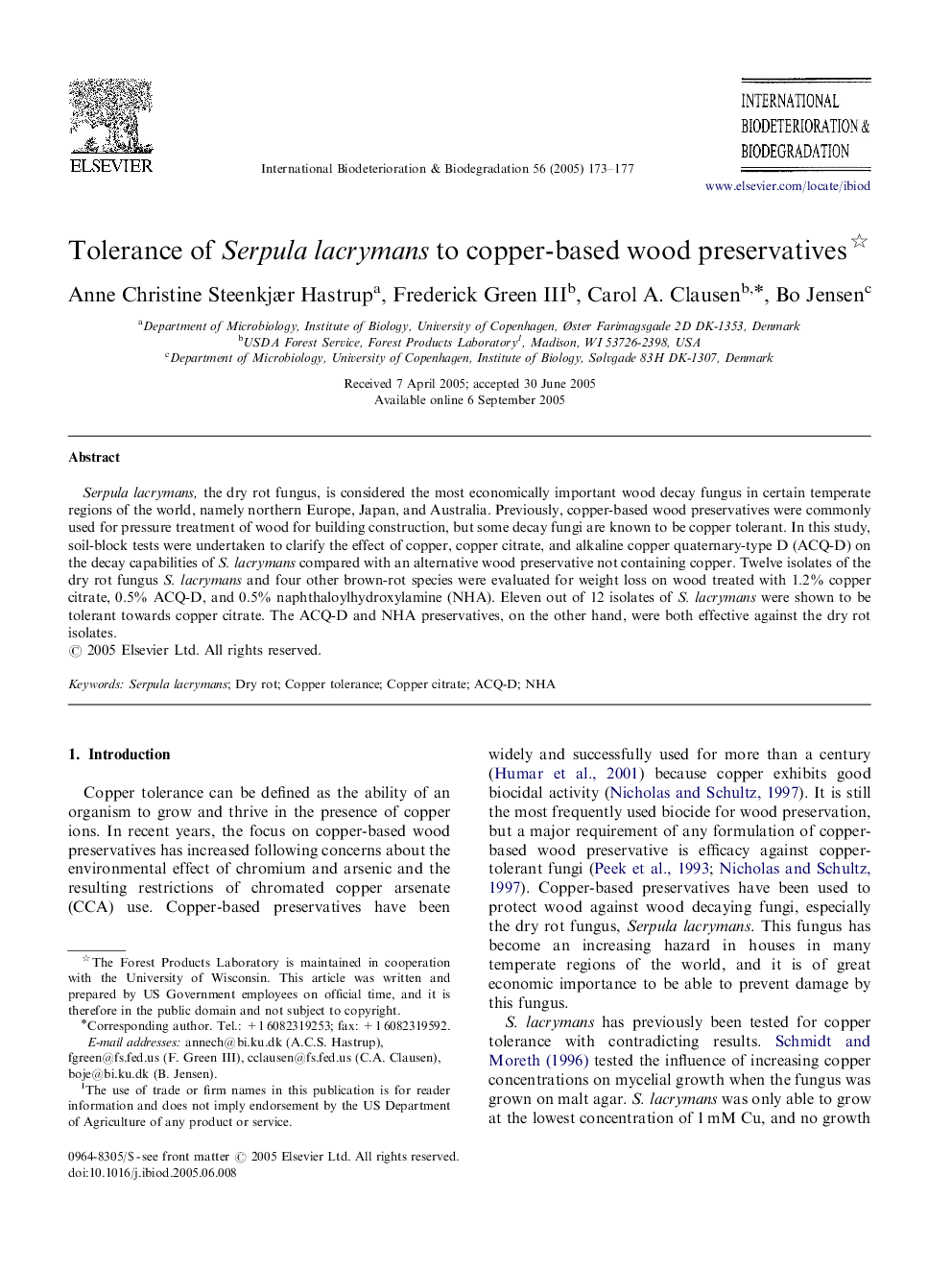| Article ID | Journal | Published Year | Pages | File Type |
|---|---|---|---|---|
| 9442245 | International Biodeterioration & Biodegradation | 2005 | 5 Pages |
Abstract
Serpula lacrymans, the dry rot fungus, is considered the most economically important wood decay fungus in certain temperate regions of the world, namely northern Europe, Japan, and Australia. Previously, copper-based wood preservatives were commonly used for pressure treatment of wood for building construction, but some decay fungi are known to be copper tolerant. In this study, soil-block tests were undertaken to clarify the effect of copper, copper citrate, and alkaline copper quaternary-type D (ACQ-D) on the decay capabilities of S. lacrymans compared with an alternative wood preservative not containing copper. Twelve isolates of the dry rot fungus S. lacrymans and four other brown-rot species were evaluated for weight loss on wood treated with 1.2% copper citrate, 0.5% ACQ-D, and 0.5% naphthaloylhydroxylamine (NHA). Eleven out of 12 isolates of S. lacrymans were shown to be tolerant towards copper citrate. The ACQ-D and NHA preservatives, on the other hand, were both effective against the dry rot isolates.
Related Topics
Life Sciences
Environmental Science
Environmental Science (General)
Authors
Anne Christine Steenkjær Hastrup, Frederick III, Carol A. Clausen, Bo Jensen,
